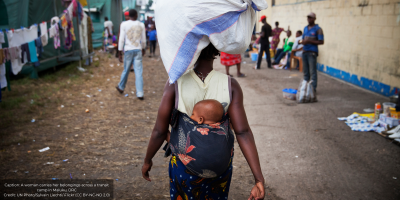Since fighting flared up in Sudan in April 2023, an estimated 8.2 million Sudanese have been forcibly displaced, out of which 1.7 million are hosted by neighbouring countries, including 588,711 people by South Sudan. At the same time, an estimated 997,743 ‘spontaneous’ returnees have come back from neighbouring countries to South Sudan between 2018 and September 2023 and significant numbers of Internally Displaced Persons (IDPs) (1,696,633) have also returned from within South Sudan. While the number of ‘returns’ has grown, an estimated 2,027,331 people remain internally displaced within South Sudan and 2,220,551 South Sudanese refugees remain displaced within the wider region.
People fleeing the war in Sudan or returning to South Sudan from neighbouring countries are arriving in South Sudan at a challenging time. Key aspects of the Revitalized Agreement on the Resolution of the Conflict in the Republic of South Sudan (R-ARCSS), which was signed in 2018, have not yet been implemented, amidst pervasive violent conflicts at the local or subnational levels over land and other issues, a steep depreciation of the national currency and skyrocketing prices, continuous flooding and other climatic shocks as well as pervasive food insecurity across many areas of the country. At the same time, donor funding has been drastically cut and the 2024 Humanitarian Needs and Response Plan (HNRP) is only 17% funded.
This research aims to provide actors across the humanitarian, development and peace sectors and donors, with a stronger understanding of the risks and opportunities associated with ‘returns’ and ‘integration’ in South Sudan, as well as highlight opportunities for conflict-sensitive (re)integration and early solutions activities. The research also highlights key lessons learned from previous returns and reintegration experiences that can inform current approaches.



